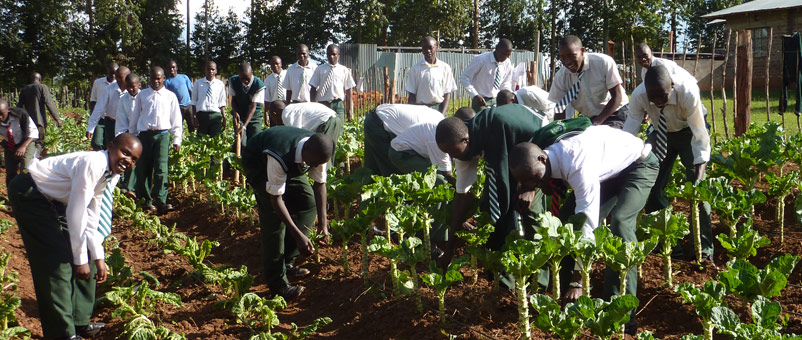A CGIAR COP24 side event looked at the changes needed to transform our food systems and protect the environmental resources that agriculture depends on. Marissa Van Epp, Global Communications and Knowledge Manager at the CGIAR Research Program on Climate Change, Agriculture and Food Security (CCAFS), looks at how policy changes has helped to drive climate-smart agriculture through irrigation in idea.
The case for adopting climate-smart agriculture practices – which can improve productivity, build resilience and reduce emissions – has been underlined by a series of events at the United Nations climate talks in Poland this year.
The “Agriculture Advantage 2.0” series highlighted five pathways towards transforming our food system, and making it fit for purpose under a changing climate. One of these was the need for enabling policies that will encourage farmers to take up improved practices that can deliver on climate and food security goals.
One case study presented by Dr. Alan Nicol at the Policy Advantage event, was an initiative led by the International Water Management Institute, CCAFS, The CGIAR Research Program on Water, Land and Ecosystems (WLE) and the Tata Trust.
Historically in India, power to pump groundwater for crop irrigation had been subsidized. But this has led to the over-extraction of groundwater. To incentivise behaviour change, the Indian government is investing in solar-powered pumps, a cleaner alternative to diesel pumps. To further encourage farmers to stop pumping more groundwater than is need, a policy to purchase any excess solar power that farmers have captured has been piloted.
This policy decision has resulted in a win-win: 75 per cent of solar energy that participating farmers are generating is being fed back into the grid, driving a sustainable energy source while putting money in farmers’ pockets. Based on the success of the pilot scheme, the Indian government has now budgeted USD 21.8 billion for a massive new scheme to promote solar irrigation, including the provision of 1.75 million solar pumps for agriculture.
There is now opportunity for this approach to expand into Africa. Morocco, for example, is set to install more than 100,000 solar pumps by 2020. In sub-Saharan Africa as well, major donors and development agencies have piloted and assessed solar pumping in Benin, Ethiopia, Kenya, Malawi, and Zambia, among others.
New research is also mapping which areas will be suitable for solar irrigation. The results for Ethiopia suggest that solar-powered irrigation is potentially suitable on an estimated 6.8 million hectares.
This story demonstrates how a shift in policy can have a transformative effect. It also highlights that resource-poor farmers need incentives in order adopt climate-friendlier practices.
Read more about the pathways towards food systems transformation in the latest briefing from the CGIAR Research Program on Climate Change, Agriculture and Food Security.
Featured photo credit: Prashanth Vishwanathan/IWMI



